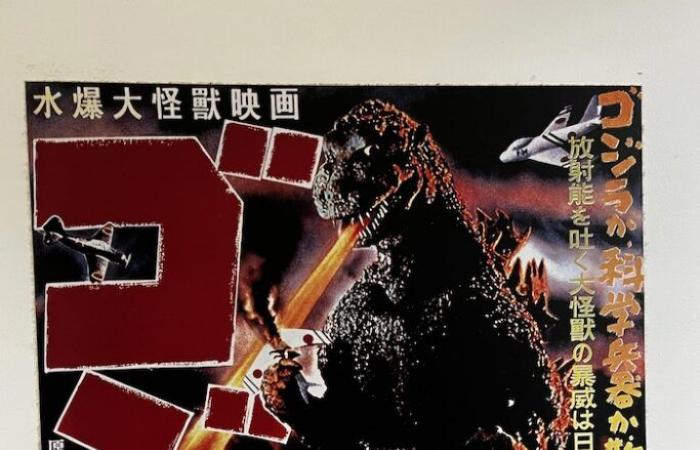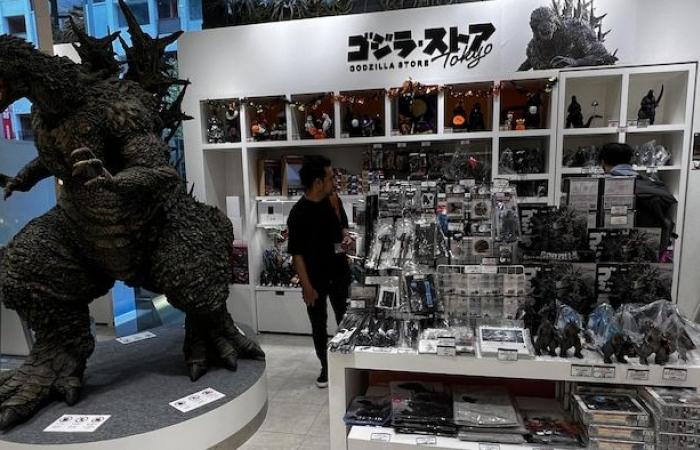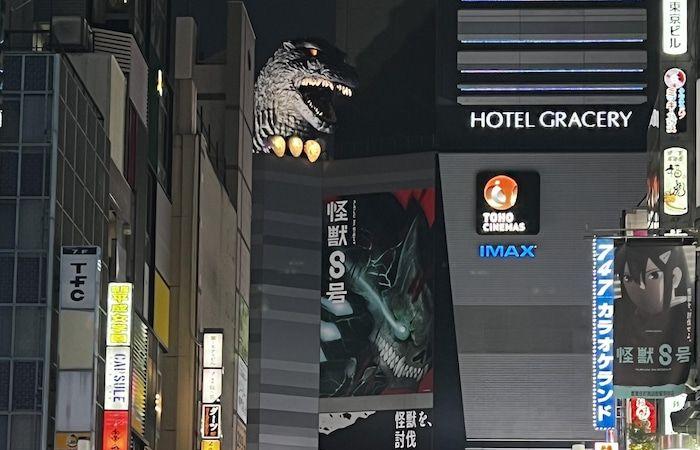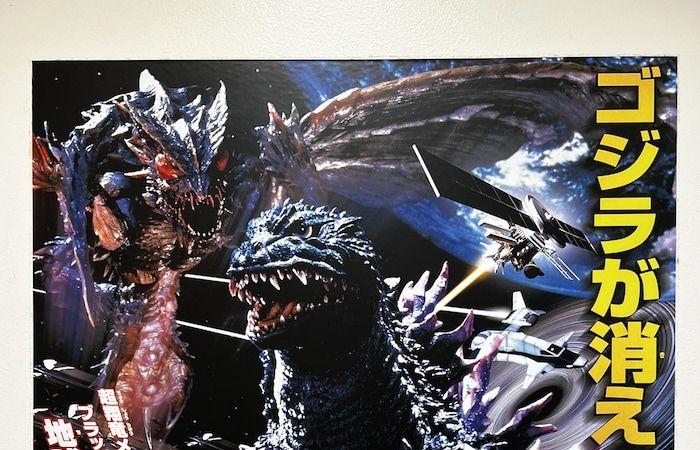The king of monsters born from nuclear ashes, Godzilla, continues to terrorize the planet as he celebrates his 70th birthday on November 3 with his atomic ray.
Few monsters have crossed generations and continents like Godzilla, the emblematic creature of Japanese cinema and symbol of the deepest nuclear anxieties.
Godzilla was created in 1954 and is part of the Kaijū wave, Japanese monster cinema depicting forces of nature before which humans are powerless.
From the first film in the series of 38, he embodies the nuclear threat and the traumas of post-war Japan.
The creation of the monster echoes the disasters of Hiroshima and Nagasaki, as well as the tragedy of the Japanese boat Daigo Fukuryū Maru, irradiated during an American nuclear test of the H-bomb in 1954.
This monster awakened by nuclear tests, which spews a radioactive ray and leaves fallout contaminating the survivors, perfectly reflects the anxiety of the time
supports Alain Vézina, professor of cinema at Cégep de Saint-Jérôme and author of several works, including Godzilla and America : clash of the titans.
Open in full screen mode
Original poster for the first Godzilla film from 1954
Photo : - / Philippe Leblanc
Godzilla fan William Tsutsui, a historian and chancellor of the University of Ottawa in Kansas, believes the appeal of Godzilla persists 70 years later because of the monster’s contemporary relevance.
Godzilla began as a response to fears of nuclear war and the trauma of World War II. Today, it remains relevant because it also reflects modern fears, such as climate change, the COVID-19 pandemic and political instability
he said.
Godzilla occupies a very special place in Japan, where he remains a figure of national pride and the face of Japanese cultural influence.
This monster paved the way for other Japanese cultural products, such as animation (anime), manga and video games, and even music, which are now ingrained in global culture.
Godzilla has a special meaning for the Japanese. It was the first product of Japanese popular culture to achieve international acclaim after World War II.
souligne William Tsutsui.
Open in full screen mode
Le Godzilla Store de Tokyo
Photo : - / Philippe Leblanc
The transformation of the monster: from destroyer to protector
Initially a symbol of destruction, Godzilla gradually evolved over the decades to embody resilience and even protection in the 1960s, marking a turning point in his meaning to Japanese audiences.
In Ghidra, The three-headed monster [1964]Godzilla goes from threat to protector of Japan, a change that symbolizes the transformation of nuclear power from a source of destruction to a potentially beneficial force
specifies Alain Vézina.
This development reflects changes in the perception of the development of civil nuclear energy in Japan, then associated with economic and technological growth.
A sharp criticism of science and its responsibilities
Beyond entertainment, the Godzilla series raises complex questions about science.
The monster reflects the dilemmas of modern science, torn between its promises of progress and its often unpredictable consequences, according to Yuki Miyamoto, professor in the Department of Ethics at DePaul University, in Chicago, and director of the humanities center of this university establishment.
It is a reflection on the responsibility of scientists, particularly when they develop inhumane weapons. Godzilla is not limited to the monster aspect. He embodies the ambiguity of science which does not necessarily solve the problems it itself created. The question is better raised in these films than in Oppenheimer
, she says.
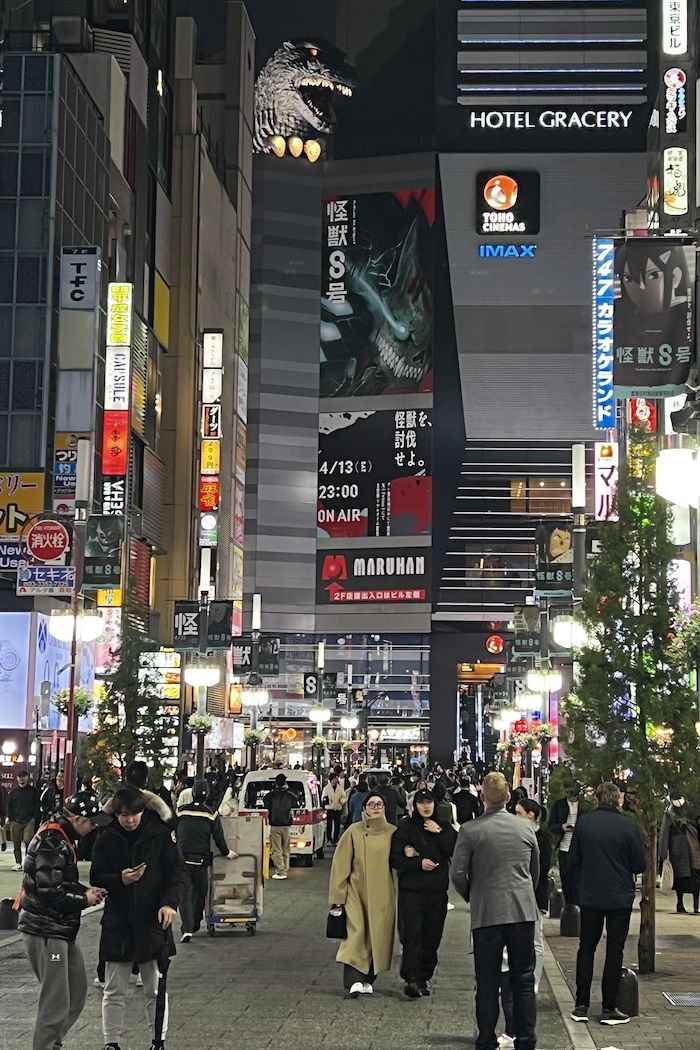
Open in full screen mode
Godzilla’s head peeks out from behind a shopping mall in Tokyo’s Shinjuku district.
Photo : - / Philippe Leblanc
As a teacher of nuclear ethics, Yuki Miyamoto uses Godzilla as a teaching tool to educate her students about the impact of science on the environment and human health.
She says she is surprised by her students’ lack of knowledge about nuclear history as well as its effects on the environment and human health.
My students know almost nothing about American nuclear tests, such as the 1,032 tests carried out by the United States, but when they discover that Godzilla is a metaphor for these dangers, they are surprised and intrigued.
she said.
The American transformation of Godzilla: a cultural debate
Hollywood’s attempt to reinvent Godzilla has sparked mixed reactions. In the 1998 version, Roland Emmerich portrayed an agile monster different from the original creature.
This break with the Japanese cultural roots of the monster disconcerted Alain Vézina and early fans.
We said: it’s not Godzilla, it has nothing to do with it. One, he moves way too fast. Two is nonsense
he criticizes.
This Western adaptation, far removed from Japanese symbolism, shows the cultural differences in the representation of the monster.

Open in full screen mode
In Tokyo, Godzilla appears on a thousand and one t-shirts. Especially at the Godzilla store!
Photo : - / Philippe Leblanc
Hollywood can’t resist turning Godzilla into a big-budget action movie. Japan, on the other hand, has been able to create more thoughtful versions of Godzilla, which go beyond simple fear to address deep anxieties
explained William Tsutsui.
The 2014 American version, although closer to the original, nevertheless reveals a divergent perception of nuclear power.
Godzilla is revived there by a nuclear bomb, an act seen as a means of protection in the American vision.
This contrast with the 1954 Japanese version, in which the monster is neutralized without glorifying nuclear power, shows how each culture interprets the tools of power and control differently.
Godzilla, still relevant in a fragile and uncertain world
The appeal of Godzilla today goes beyond the simple fascination with a giant monster, even if a large number of fans in America do not know the origins and symbolism of the monster.
Professor Yuki Miyamoto believes that some of the younger fans nevertheless see Godzilla as a reminder of the dangers that science continues to pose.
We are still faced with nuclear waste produced by power plants. Fifty years later, we still have no answers
she says.
Modern geopolitical tensions, such as the conflict in Ukraine and the Fukushima nuclear disaster in Japan in 2011, echo the themes of the series.
As long as anxieties linked to nuclear weapons persist, Godzilla remains relevant as a reminder of the dangers of this technology
adds Alain Vézina.
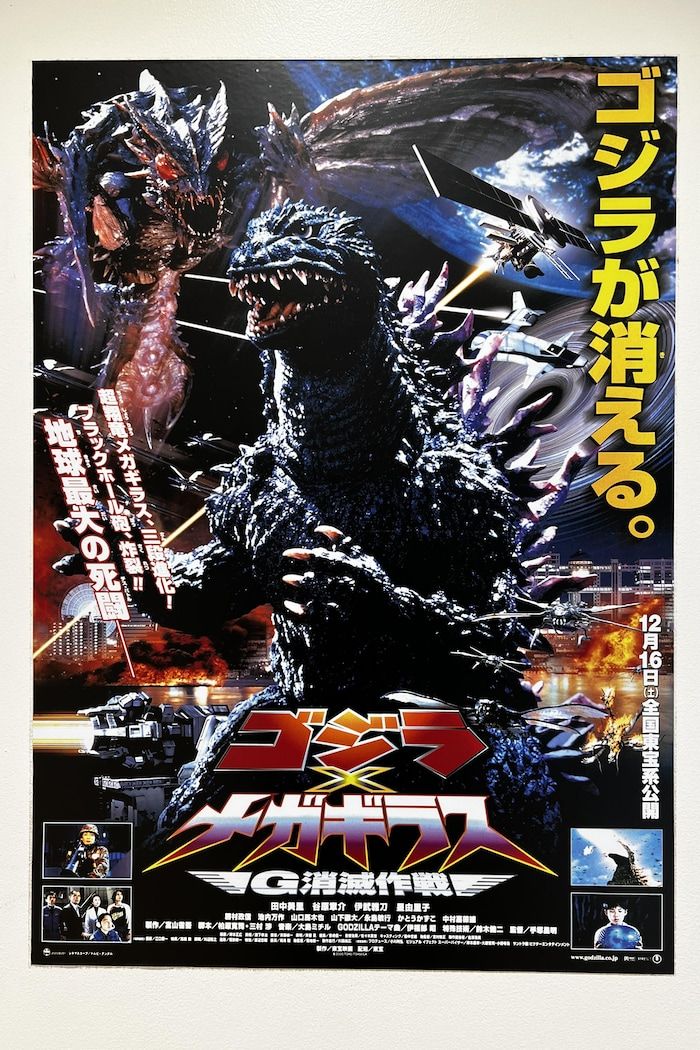
Open in full screen mode
Poster for “Godzilla vs. Megaguirus”, a Japanese film directed by Masaaki Tezuka which was released in 2000
Photo : - / Philippe Leblanc
The resurgence of recent films like Shin Godzilla et Godzilla Minus One also aims to mirror Japan-United States relations. These films bear witness to a Japan in search of its own identity, between strategic alliances and the desire to preserve its autonomy.
The Godzilla series now has 33 films made in Japan and 5 in Hollywood. However, Yuki Miyamoto, Alain Vézina and William Tsutsui agree on one thing.
According to them, the two must-see films are the original 1954 film and the very last one, Godzilla Minus One, Oscar-winning for its special effects and celebrated for its return to original themes.

